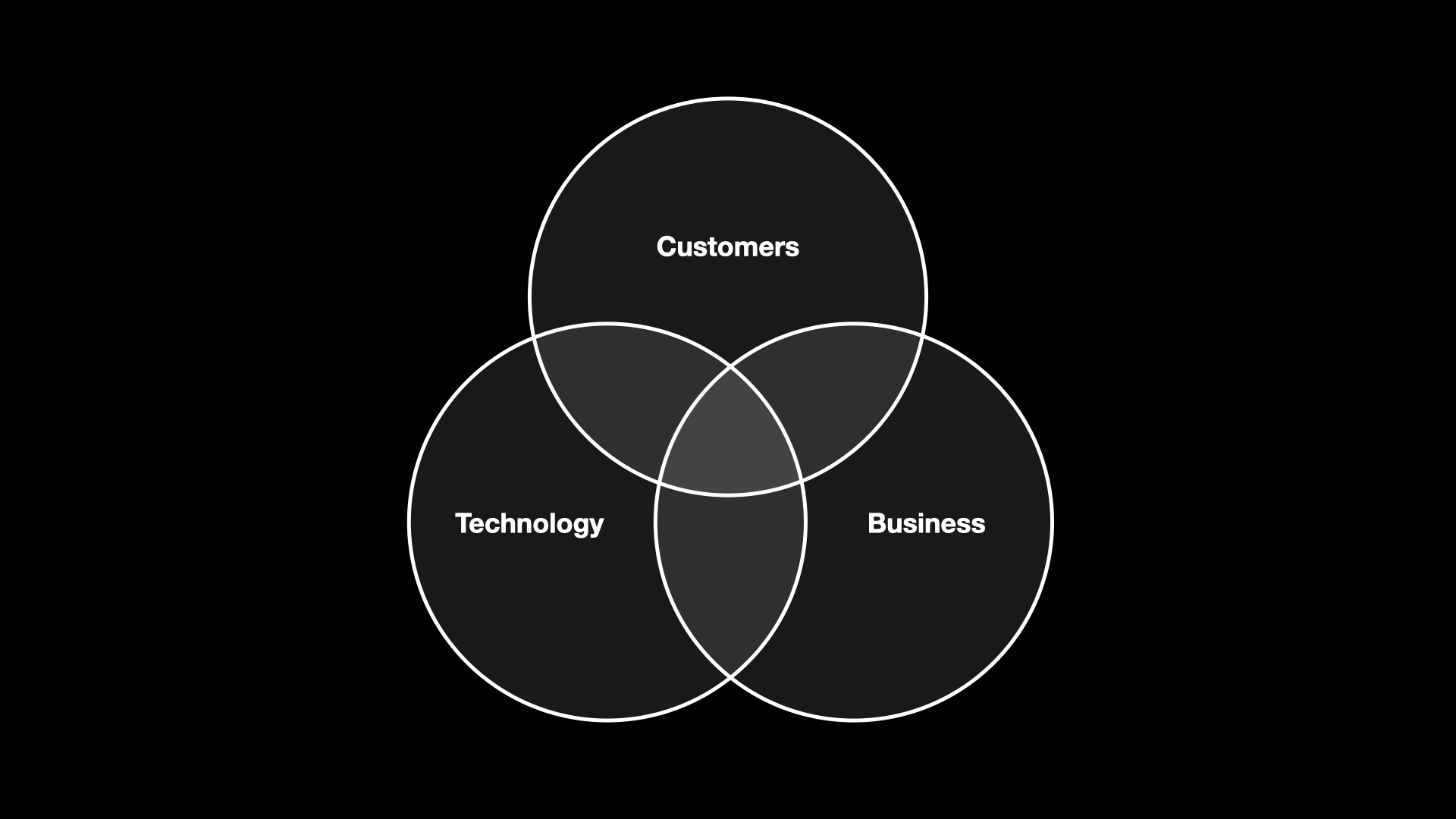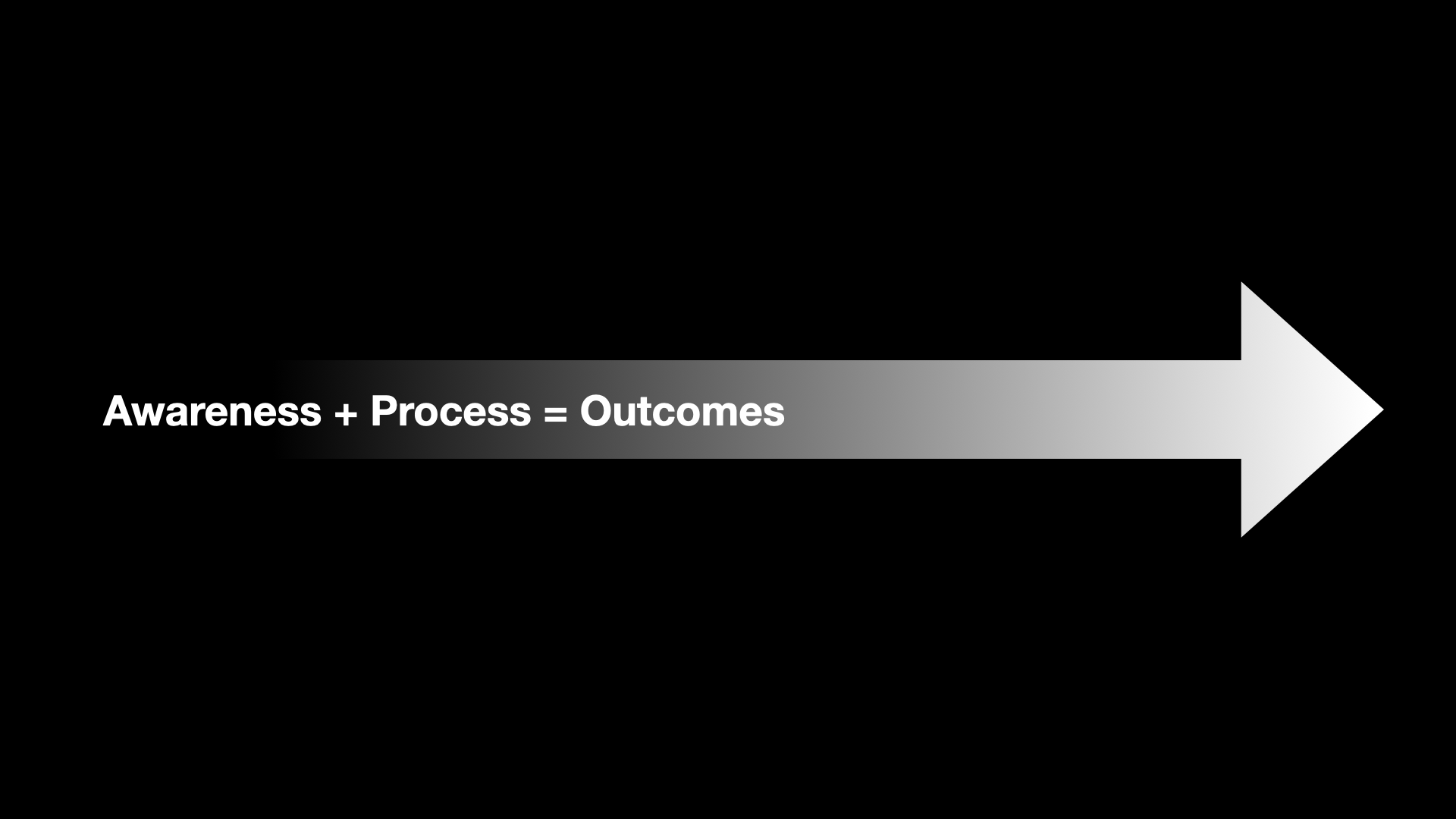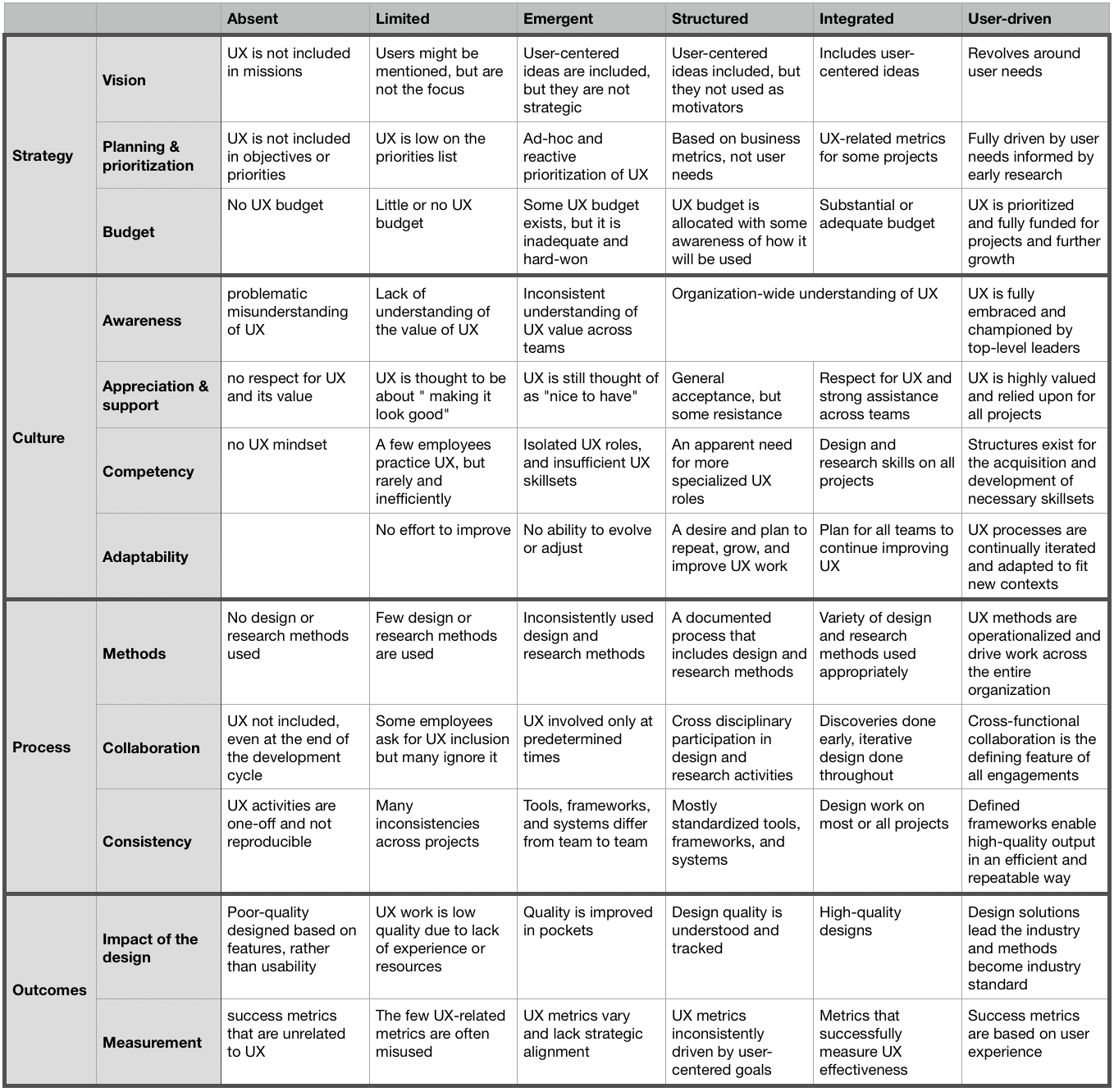UX maturity drives team growth
I revisited the benefits of evaluating and leveraging UX maturity within your organization. Focusing on Awareness, Processes, and Outcomes is crucial for driving your team’s efforts and growth. However, it’s important to note that awareness alone is passive and offers limited value without appreciation and support from the broader organization.1
We discovered a significant gap in our design process documentation. This led us to create a comprehensive design system, which reduced design inconsistencies and accelerated our product development cycle by two weeks.
Strategic role of UX in the value chain
UX design is pivotal in the value chain, shaping product success, customer satisfaction, and business outcomes. While beautifully crafted UI components and prototypes are visible outputs, they’re just part of the story. The value chain begins with strategic business decisions and culminates in a product recognized by customers.
Documenting processes for clarity and efficiency

Driven by UX maturity insights, we documented our design team’s process at a nuanced level. This systematic approach allowed us to evaluate each action’s value, dependencies, and measurements. The immediate benefits included:
- Understanding the causes of wasteful delays
- Creating easy-to-follow “recipes” for new design projects in project management software
This documentation serves as a strategic tool for improvement and delivering valuable outcomes.
For example, our new process model introduced a “design kickoff” phase, where UX designers collaborate with product managers and developers before starting design work. This simple addition reduced mid-project re-plannings and improved overall design work completion times by weeks.
Linking design outcomes to business metrics
Without a mature enough UX team and organization-wide support, your efforts to set up processes and deliver valuable outcomes are limited. It’s a chicken-and-egg situation where you must drive, lead, and show the future. Identify the most strategic metrics that illustrate the influence of the UX team. These metrics should not be mere numbers but strategic indicators connected with:
- Organizational goals
- Financial outcomes
- Customer satisfaction
- Meaningful analytical data
Be cautious about introducing vanity metrics. This reiterates the importance of your role as design and product leads in driving meaningful outcomes.
For example, we are currently exploring customer journeys sliced into distinct phases. Each phase has a set of metrics to collect customers’ satisfaction, business outcomes, and technical performance. This approach allows us to tie UX improvements directly to business impact, providing a clear narrative of the design’s value to stakeholders across the organization.
The goal is to create a feedback loop where UX metrics inform design decisions, which in turn drive business improvements. This cycle helps cement the strategic importance of UX within your organization.
Expanding on value and metrics
I delved deeper into value and metrics in a conversation with Rene Rumberg2. Our discussion, “Shifting From Pixels to Experience: Esko Lehtme’s Strategic Approach to Evaluating UX-Design and Customer Experience at SEB Baltics”3, revealed key insights:
- The evolution of UX communication from pixels to experience design
- Leveraging education to integrate UX principles organization-wide
- Connecting UX initiatives directly to business goals and profitability
The shift from pixel-level design to experience design wasn’t instantaneous. It took years of persistent communication and demonstration.
“I can measure that in years, as the organization is big, and the only measurement for me was that the message started to go through when I heard it echoing back.”
This echoing effect became the true measure of successful UX integration.
Our UX team’s approach to organizational change involves three key tracks:
- Education through hands-on Service Design Foundation training
- Data-driven advocacy linking design changes to business improvements
- Strategic conversations with leadership about long-term vision and customer journeys
By connecting everything to “real money” - contracts signed and revenue earned - we’ve made UX an indispensable part of our business strategy. This approach has transformed how our organization views and values UX design, positioning it as a key driver of business success.
Advance your career and leadership
Subscribe and get actionable insights sent to your inbox.
- Practical frameworks from years of experience
- Case studies and implementation guides
- Career development strategies for professionals
I respect your privacy. I will never share your email, and you can unsubscribe anytime.
This presentation builds on concepts introduced at Refresh 2023 and continues to explore strategic UX leadership. ↩︎
“Rene Rumberg,” LinkedIn, https://www.linkedin.com/in/renerumberg/ ↩︎
“Shifting From Pixels to Experience: Esko Lehtme’s Strategic Approach to Evaluating UX-Design and Customer Experience at SEB Baltics,” Refresh Conference, April 5, 2024 ↩︎




